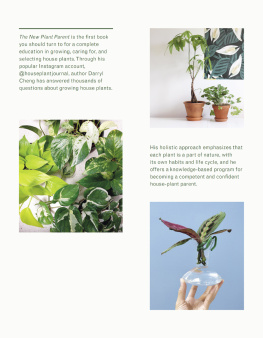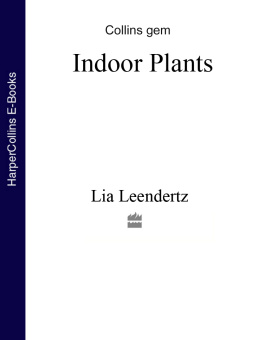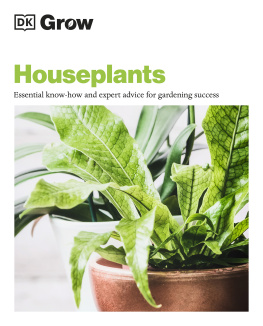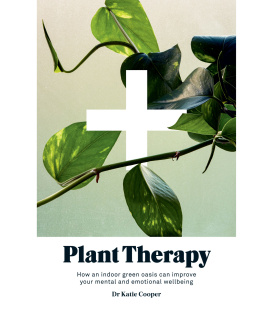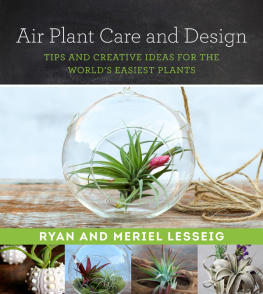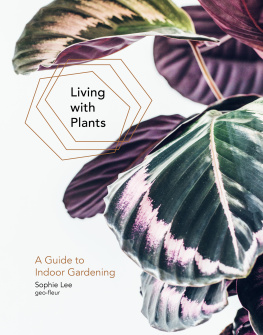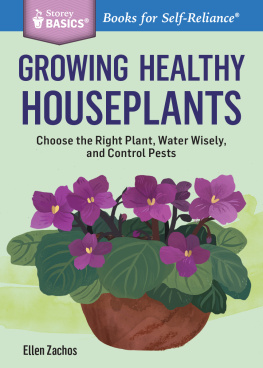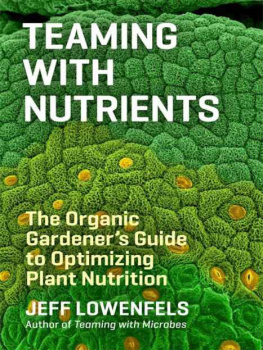Part I
Caring for Plants
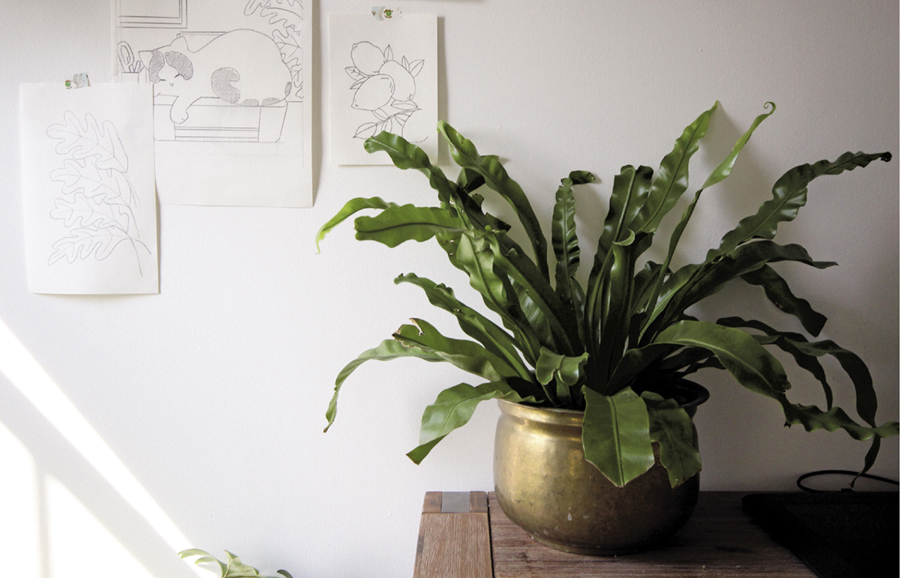
A brass pot complements the green tone of the birds nest fern (Asplenium nidus).
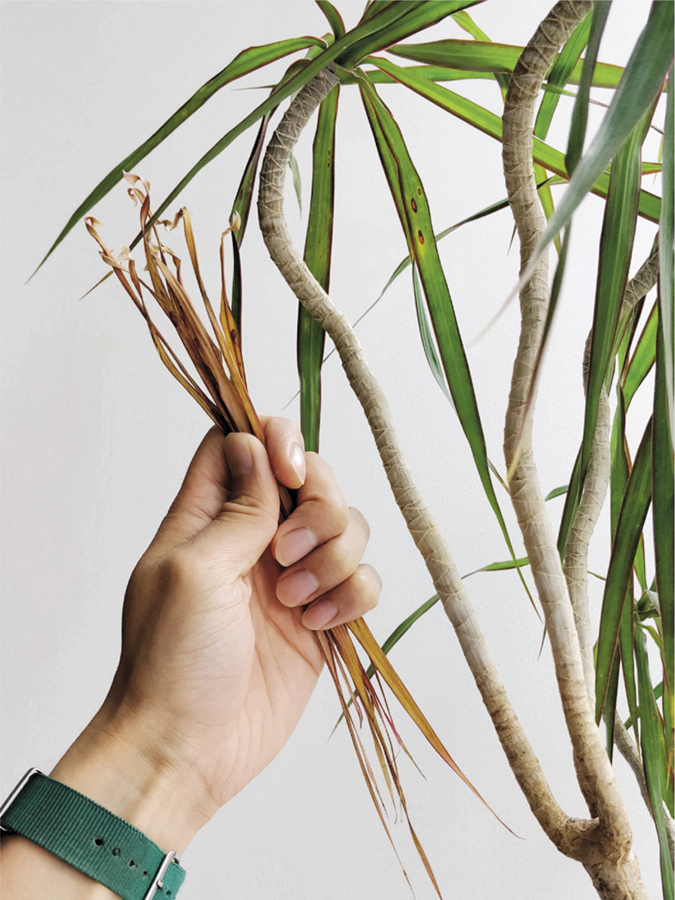
Older leaves on this Dracaena marginata naturally fall off as new ones emerge at the tip. Every line on this trunk is the scar of an old leaf. Therefore, know your growing conditions, and let nature take its courseolder leaves will fall off.
1. The Plant Parenthood Mentality
The first tagline I used for my blog, House Plant Journal, was: A journal for my house plants. Although it was completely redundant, I wanted to emphasize that I would be documenting my experiences with my house plantsI enjoyed watching them grow and change. Naturally, when I started out, I looked to books and the Internet for guidance. As I read more and more plant-care advice, I found an imbalance, where the appreciation of house plants was assumed to be mostly visual, while their maintenance was looked upon as a chore, focused on identifying and solving problems. Hardly anyone talked about the long-term satisfaction of owning house plants. Instead, there was an accumulation of tips and tricks that would lead one to believe that plants are either super-easy to care for, requiring little consideration of environmental conditions, or finicky drama queens that keel over and die if you dont stand there and mist them every five minutes.
Most plant-care advice is given as a set of instructions tied to individual plant species. The advice reads like a baking recipe that advertises guaranteed results. At the same time, a plants supposed imperfections are highlighted, and blame is assigned for failure to overcome them: overwatering, underwatering, and so forth. The expectation derived from such advice is that a plant should always look the same or even grow to a state of thriving perfection, except when it mysteriously fails to do so. Reading the reassurance of, This plant is easy to care for, only adds to ones feelings of being a bad plant parent when a few leaves turn yellow and fall off.
I think a shift in the plant-care mind-set is needed. In documenting my experiences with house plants, I focused on understanding what environmental factors were most important for house-plant enjoyment. I wasnt looking for perfectionI just wanted to know that I was doing everything I could and that the plant was trying its best too. I applied my engineering thinking to the hobby: optimize my care efforts for maximum house-plant satisfaction. My goal in writing this book is to empower you to understand your homes growing conditions, to be observant, and to accept what nature has in store. Its about equipping you with the right knowledge and expectations, so you will know that youre doing the best you can, given the conditions in your home. Finally, I want to help you break away from old habits and ways of thinking that hinder you from truly enjoying plant parenthood.
Easy Versus HardWhat Do You Expect?
Plant experts are constantly telling you which plants are foolproof, but what really makes a particular house plant easy or hard to care for? Of course, a lot has to do with how much effort and patience youre willing to put into its care, but what you expect from the plant is just as important.
Some plants demand attention to prevent permanent damage. Take wilting, for example. When their soil dries out completely, some leafy plants, such as the peace lily and the maiden-hair fern, become dramatically wilted. With a good soaking, the peace lily will perk up and look just fine, but the maidenhair fern may not recover. A plant that you can easily kill can be reasonably described as hard to care for, and some plants require more vigilance to keep them alive! Fortunately, as youll see in this book, most of the plants you will grow are more forgiving.
If you dont want to put time and energy into plant care, growing certain kinds of plants will be hard for you. Growing lots of plants, especially large ones, can be overwhelming if you dont enjoy the process of caring for them. If you need to spend an hour moving plants around simply to water them, you might consider them hard to care for. This book will help you contain your plants for ease of watering and schedule their care sensibly.
If you expect every plant to look beautiful all the time and never drop a leaf, then every plant will seem hard to care for. Truly, I tell you, this is an impossible expectation to meet, so get used to removing some dead leaves. Older leaves must die off to balance the resources required for new ones. Most plants develop physical imperfections despite all efforts, and every plant will look different once it has adjusted to living in your home. If you know to expect this, you will learn to appreciate your plants resourcefulness and character.
And, of course, any plant is hard to care for if you dont understand its needs. Can you give it the amount of light it needs to survive or to thrive? Do you know how to assess soil moisture and how to properly water a plant? The rest of this book should help you develop confidenceyoull know what youre doing! When you understand your growing conditions and care methods, many house-plant problems fall into the unavoidable and non-life-threatening category: They are your problems, not the plants problems. But if you can change your expectations and accept what nature has in store, youll get great enjoyment from your plants for many years.
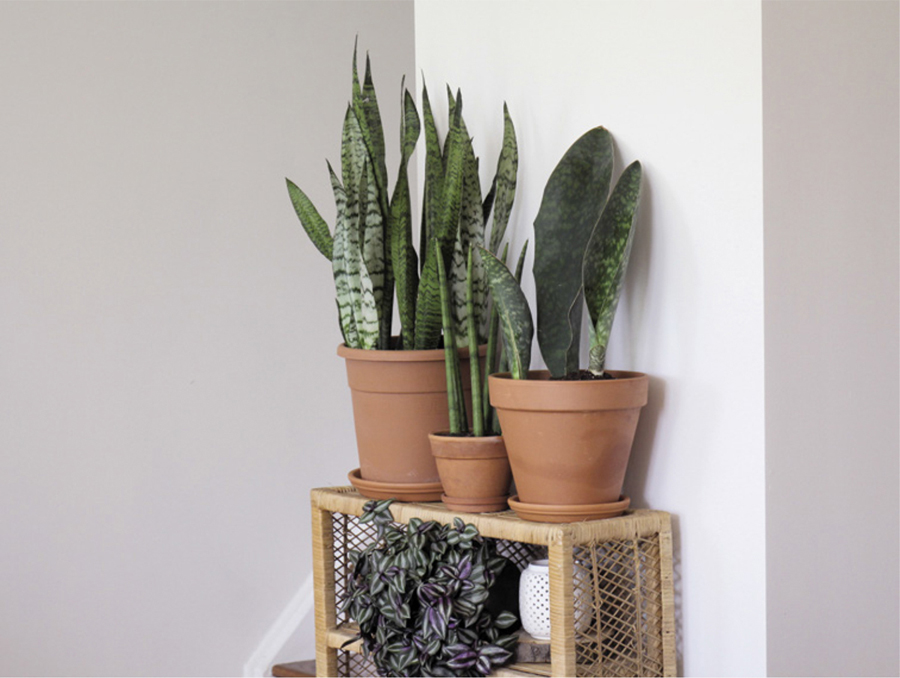
Snake plants are classified as easy because they can maintain their broad leaves for years even while living several feet from a window, which, as youll learn, corresponds to lower watering frequency.
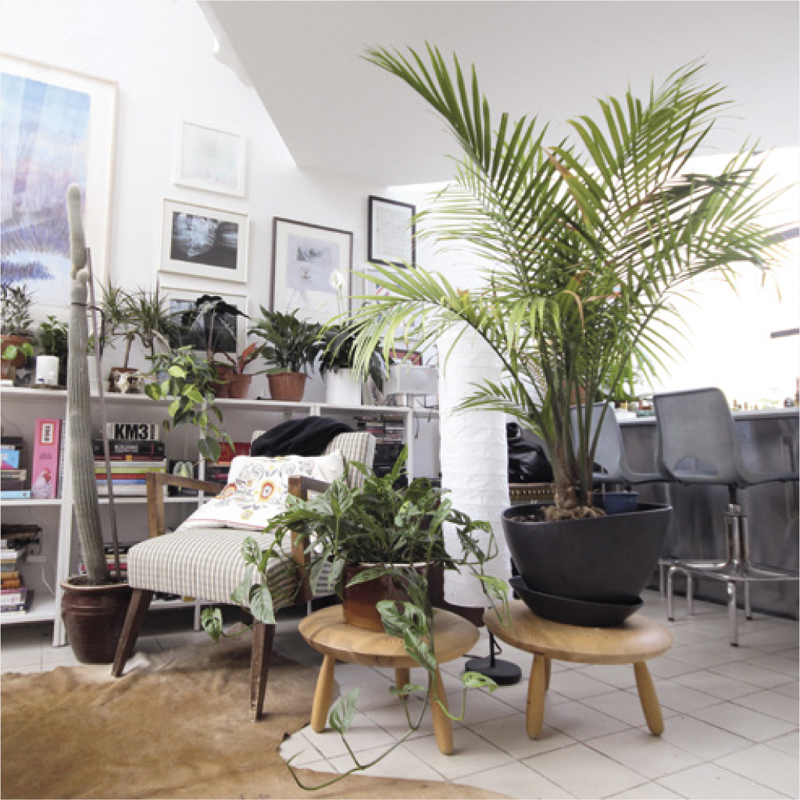
When a palm frond becomes yellow and you tried everything to stop it, does that make the palm a hard plant to care for? What if you knew to expect some leaf loss?
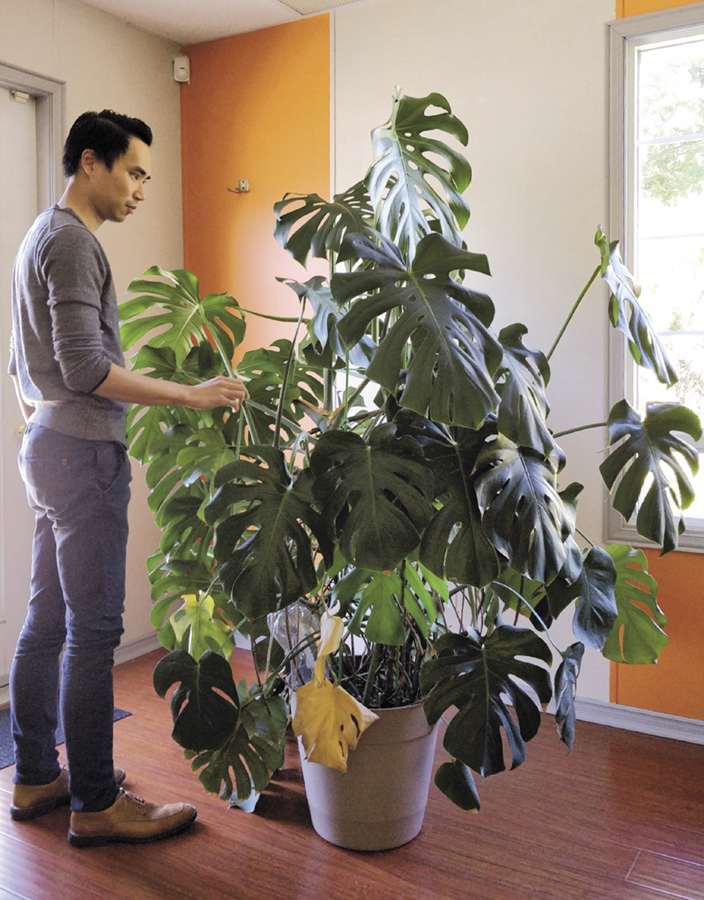
A monstera is a large plant that can be enjoyed for many years if you have the space!
Understanding the Adjustment Period
Most of the house plants we buy are grown rapidly in conditions that are nearly impossible to reproduce inside our homes. Thus, every plant you bring home faces an adjustment period. The greater the difference in any of the original growing conditions compared to our homes, the more impact the adjustment period will have on the plant. The most influential factor for plant adjustment is light, because it determines the rate and direction of growth, given adequate water and air flow. And its not as simple as theres less sun; its the fact that your walls and ceiling are opaque to the sky.
During the adjustment period, theres a risk of older leaves yellowing, leaf tips becoming crispy brown, and of a plants developing leggy or lopsided growth patterns. After some weeks or months, the rate of leaf death will balance the rate of leaf growththe plant has stabilized, for now. Sometime after that, the plant will likely take on a new shape optimized for its new home. The next adjustment will come when it is time to repot the plant or replenish the soil. You can suffer through the changes your plants undergo, or you can enjoy the process of helping them through the adjustment period, removing dead leaves and pruning them to a pleasing shape.

